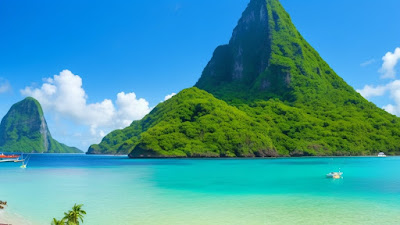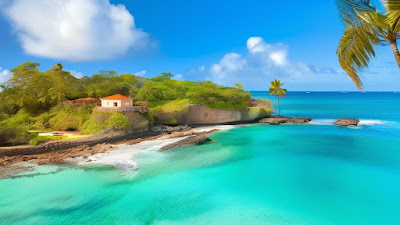Saint Vincent and the Grenadines, a stunning Caribbean archipelago comprising 32 islands and cays, is known for its pristine beaches, crystal-clear waters, lush landscapes, and vibrant marine life. This destination is perfect for travelers seeking both relaxation and adventure in a picturesque setting. Here's a detailed guide to help you plan your trip:
Getting There
- By Air: Argyle International Airport (SVD) on Saint Vincent is the main gateway, with flights from the US, Canada, Europe, and other Caribbean islands. Smaller airports on islands like Bequia and Canouan cater to regional flights.
- By Sea: Ferries operate between Saint Vincent and the Grenadine islands. Yachts and charter boats are popular for exploring the archipelago.
Best Time to Visit
- High Season: December to April, featuring dry, pleasant weather and a lively atmosphere with various events and activities.
- Low Season: May to November, which includes the rainy season and potential hurricanes. This period offers fewer tourists and lower prices, but be prepared for possible rain and storms.
Entry Requirements
- Visa: US, UK, EU, and many other nationalities do not require a visa for stays up to 30-90 days. Check specific requirements based on your nationality.
- Health: No mandatory vaccinations are required. It’s advisable to be up-to-date on routine vaccines and check current COVID-19 regulations, which may include proof of vaccination or a negative test.
Accommodation
- Luxury Resorts: Options like Mandarin Oriental on Canouan, and private island resorts such as Petit St. Vincent offer high-end amenities and stunning settings.
- Boutique Hotels: Unique stays such as Bequia Beach Hotel and Young Island Resort provide charm and personalized service.
- Budget Stays: Numerous budget-friendly hotels, guesthouses, and Airbnb options are available, particularly on Saint Vincent and Bequia.
Top Attractions
- Kingstown: The capital city of Saint Vincent, known for its colonial architecture, bustling markets, and historical sites like Fort Charlotte.
- La Soufrière Volcano: An active volcano on Saint Vincent offering challenging hikes and breathtaking views from the summit.
- Botanical Gardens: One of the oldest in the Western Hemisphere, located in Kingstown, featuring a variety of tropical plants.
- Tobago Cays Marine Park: A paradise for snorkelers and divers with vibrant coral reefs and abundant marine life.
- Bequia: Known for its beautiful beaches, charming villages, and vibrant sailing community.
- Mustique: A private island famous for its luxury villas and celebrity visitors.
Activities
- Water Sports: Snorkeling, diving, sailing, and windsurfing are popular due to the clear waters and rich marine biodiversity.
- Hiking: Numerous trails, including the hike up La Soufrière Volcano and various coastal walks.
- Sailing: Charter a yacht to explore the Grenadines, visiting secluded beaches and picturesque harbors.
- Cultural Experiences: Explore local markets, attend festivals like Vincy Mas, and visit historical sites.
- Culinary Tours: Savor local cuisine with dishes like callaloo soup, roasted breadfruit, and fresh seafood. Don’t miss trying local rum and tropical fruit juices.
Travel Tips
- Language: English is the official language, making communication easy for English-speaking visitors.
- Currency: Eastern Caribbean Dollar (XCD) is the official currency, though US dollars are widely accepted.
- Safety: Saint Vincent and the Grenadines are generally safe for tourists, but it’s always good to take standard precautions, especially in crowded areas.
- Transportation: Renting a car is convenient for exploring Saint Vincent. Ferries and water taxis are essential for island-hopping. Local buses provide inexpensive public transportation.
Saint Vincent and the Grenadines offer a perfect blend of natural beauty, cultural richness, and outdoor adventure. Whether you’re exploring volcanic landscapes, diving in coral reefs, lounging on idyllic beaches, or sailing through the Grenadines, this Caribbean paradise promises an unforgettable and diverse travel experience.











